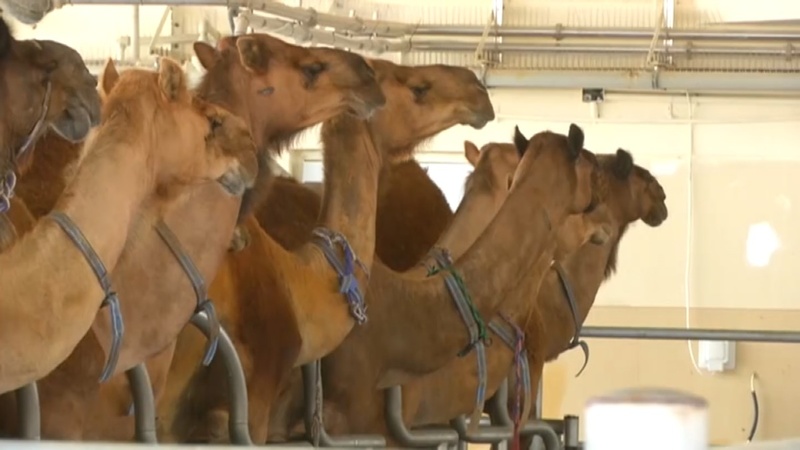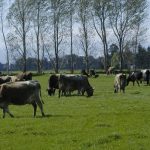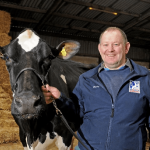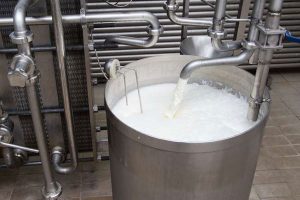
But beyond being a primary source of transport in the area, camel milk is spawning a global market estimated at $5 billion.
Beyond Kenya, East Africa is known to have some of the largest camel populations in the world, estimated at 12.2 million. Somalia, Ethiopia, Djibouti and Eritrea are some of the other East African countries where camel business is entrenched.
As demand for camel milk grows, driven by an insatiable appetite from health-conscious consumers from as far as China and North America, and a local booming middle-class that is warming up to the slightly salty milk, it is creating local entrepreneurs in the pastoral areas and boosting investment.
Food experts have hailed camel milk as ‘white gold’ whose Vitamin C content is three times richer than that of a cow’s milk. They therefore recommend it to those without access to a balanced diet and those suffering from malnutrition, diabetes, allergies among other diseases. In some instances it has been used as an aphrodisiac.
The creamy liquid that has earned itself the title of a “superfood” is now being converted from its traditional form of consumption through smoking or boiling to being pasteurised or turned into powdered form.
Vanguard entrepreneurs have added value to it by creating yoghurts, milkshakes, ice creams, baby milk formula and even camelcino, a camel milk cappuccino.
In Nairobi’s sprawling suburb Eastleigh, christened Little Mogadishu owing to its large population of Somali migrants, camel milk is big businesses. From processing shops to vendors, the milk finds its way to the capital city’s supermarkets, hotels and schools. Somali hotels that are a common sight in Kenya’s bustling central business district frequented by foreigners and the country’s burgeoning middle class are some of the biggest customers of the milk coming from Eastleigh. But Little Mogadishu forms the last chain of a long and well-coordinated value chain from North Eastern Kenya and Somalia where camel farmers are now struggling to meet the thriving demand for the white gold. “I cannot even meet daily orders. As days go by so do the orders increase. It is wild. The appetite for the milk in Nairobi alone is unprecedented,” said Abshir Asad one of the vendors and processors in Eastleigh.
Women are at the heart of this trade. Camels are a source of wealth and status in the pastoral community. While the animals belong to the men, the milk and its products are owned by women. Aware of the untapped potential of the milk, women have formed themselves into groups and cooperatives to enjoy the economies of scale.
Amina Amburo is the secretary of Naag Dayax in Garissa County, one of the area with the largest population of camels in North Eastern region. Realising the goldmine in camel milk they formed the group in 2015, first distributing it to local markets but later meeting the needs of traders like Asad who pitch tent in towns. The competition has been good for business with profits for the women more than tripling. Each woman brings her milk into a collection point which is then combined and sold to select traders. A litre costs on average $1 and in a month they are able to earn up to $2000. “The demand over the four years has grown in ways we couldn’t imagine. Out of the profits we get we are buying more camels because we have never had an investment that is this rewarding”, said Amina.
The business however wasn’t always smooth. When they started they relied on motorcycle riders to move the milk to the villages, a long bumpy ride, usually three hours, and under very high temperatures that would see up to 25 per cent of milk go bad before it reached the market. To insulate themselves from further loss, they resorted to boiling to preserve it. The boiling however would take make hours, see the women spend a fortune on firewood and would spoil vital nutrients and flavour.
But now numerous initiatives by the government and the private sector have paid off and boosted milk production and collection. Refrigerated vans pick milk and deliver it to designated towns and collection points. Milk ATMs that are commonplace in towns ensure milk is refrigerated increasing its shelf life.
The government aware of the growing potential has been distributing camels to schools and self-help groups to increase the numbers.
Food experts now argue that the growing popularity of the camel milk in the local and international markets due to its proven benefits is positioning it in the same league of African super foods like Ethiopia’s teff, tamarind, baobab and Senegal’s fonio.
“As we continue experiencing a growing middle class in Africa that is keen on the kind of food it consumes and the market for camel milk expands beyond traditional Middle East markets to China Europe and America where it is already enjoying great uptake, the demand is bound to soar to levels not seen before. This is a huge opportunity for the pastoralist economy that is being buffeted by climate change and whose only lifeline now is the camel,” said Nathaniel Okumu a food technologist.



















